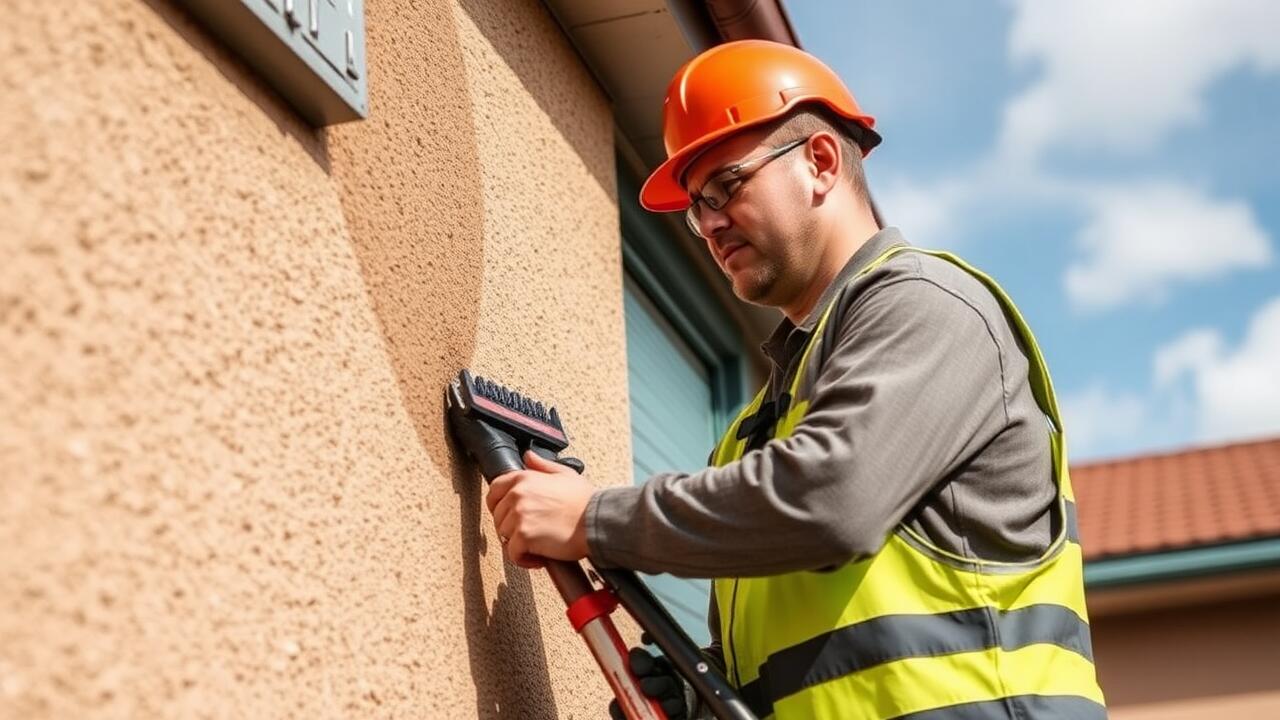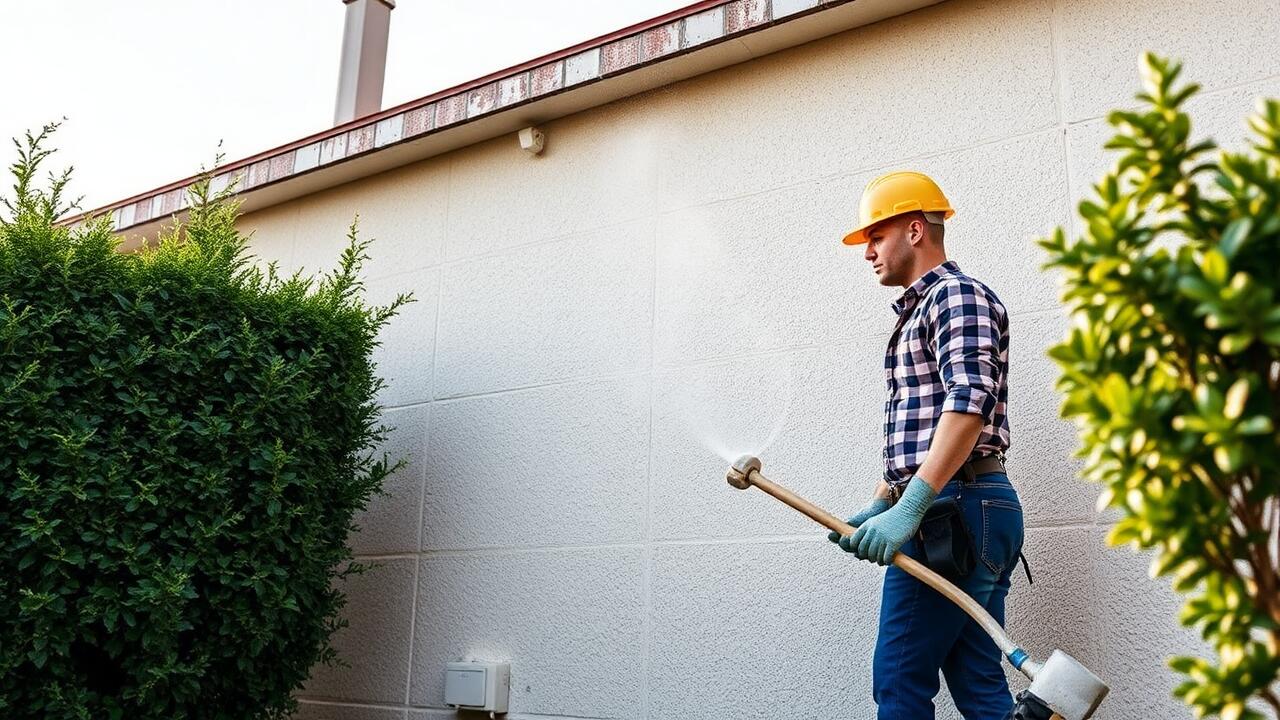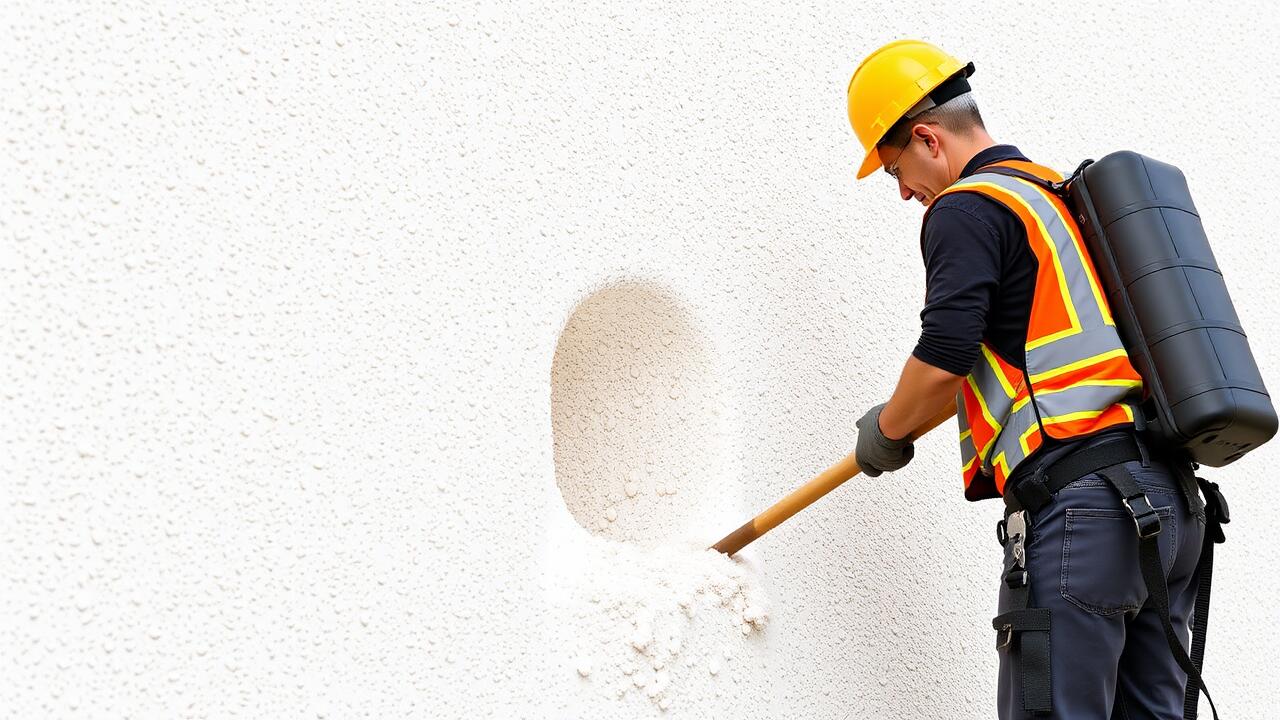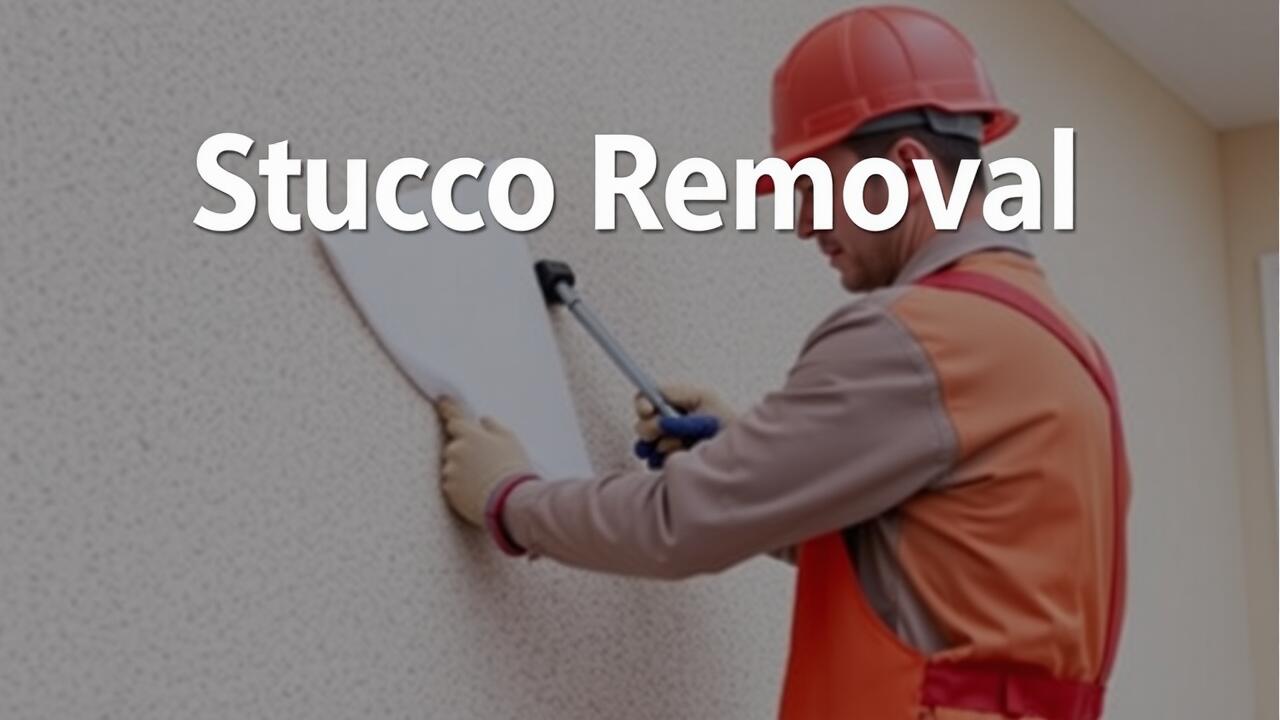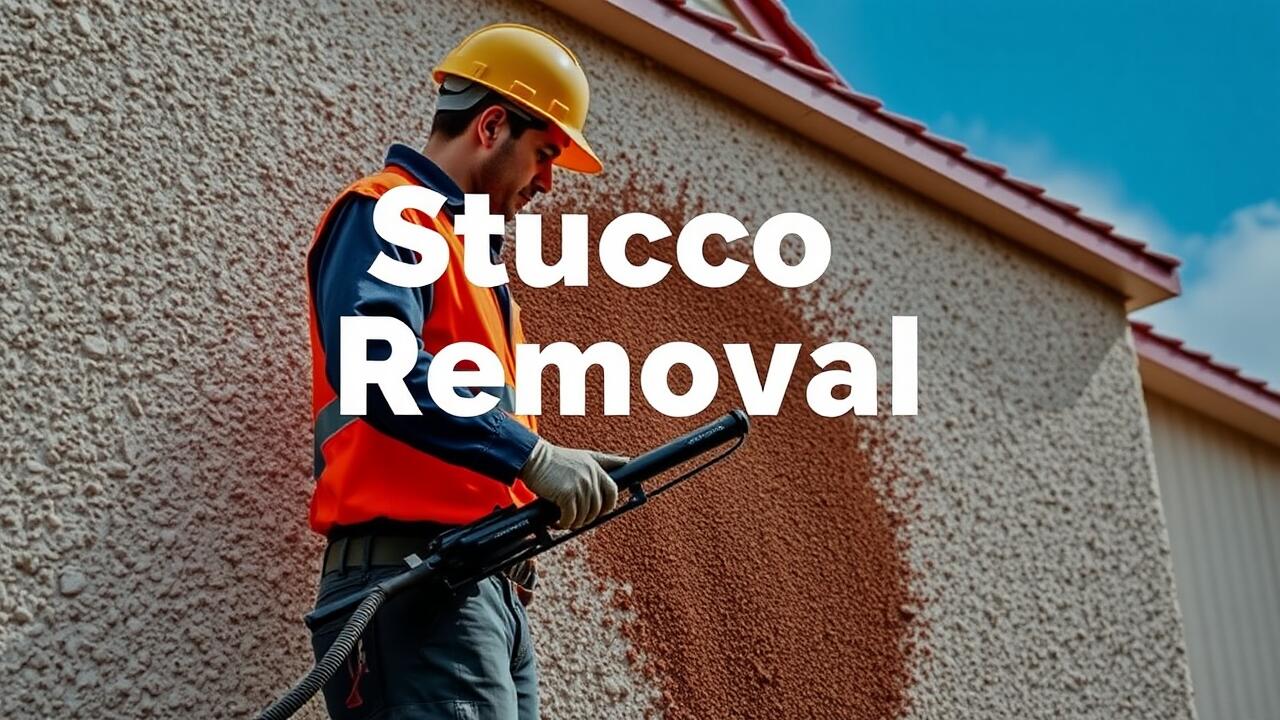
Dealing with Hidden Moisture Issues
Hidden moisture issues often present significant challenges when tackling stucco removal. If left unaddressed, moisture can lead to mold growth and structural damage. Before commencing any demolition, it's vital to inspect the underlying structures for signs of water damage. This can include soft spots in the framing, discoloration on walls, or even noticeable mold. Conducting a thorough assessment helps identify areas that require immediate attention. Professionals often emphasize the importance of resolving these issues to prevent ongoing problems during and after the removal process.
When considering the role of waterproofing and ventilation in stucco removal, the focus shifts to safeguarding the property from future moisture infiltration. Effective methods include enhancing drainage systems and applying waterproof barriers to protect underlying materials. It's wise to consult with specialists in the area, such as those offering stucco removal in Los Feliz, Los Angeles, to ensure every aspect of moisture management is addressed. Addressing these hidden concerns upfront can save additional costs and headaches down the road.
Inspecting Underlying Structures for Damage
When it comes to inspecting underlying structures for damage, the first step is to assess the condition of the wall framing and any insulation. Moisture trapped behind stucco can lead to significant rot or mold growth. Before proceeding with any stucco removal, conduct a thorough evaluation of the wood framing and other building materials to identify signs of decay. This inspection is crucial, especially in areas like Boyle Heights, Los Angeles, where climate conditions can exacerbate moisture issues.
If damage is detected, it is essential to determine whether it can be repaired or if more extensive work is necessary. Small areas of rot might be treatable, allowing for localized fixes, while larger issues could indicate a need for stucco removal to address the root cause effectively. Proper assessment will help establish a plan for repairs and ensure that any necessary actions—such as "Stucco Removal Boyle Heights, Los Angeles"—are executed with full awareness of the surrounding damage.
Disposal Options for Removed Stucco
Proper disposal of removed stucco is essential for responsible home renovation. Many local regulations dictate how construction debris must be handled, and residents should be aware of these rules. For those undertaking stucco removal projects in areas like Encino, Los Angeles, it is vital to check with local waste management services to understand their requirements. Avoiding illegal dumping not only contributes to community upkeep but also helps protect the environment.
Recycling options are available for old stucco, which can often be repurposed for other construction projects or landscaping. Some companies specialize in reclaiming and recycling stucco materials, reducing waste in landfills. Homeowners should research these services as they can be a sustainable alternative to traditional disposal methods. By choosing responsible disposal options for stucco removal, individuals can contribute to minimizing their ecological footprint while efficiently managing their renovation projects.
Environmentally Friendly Ways to Dispose of Stucco
When considering stucco disposal, exploring environmentally friendly options is beneficial. One approach is recycling the material. Some companies specialize in repurposing stucco, transforming it into aggregate for new construction projects. This process not only reduces landfill waste but also conserves resources by minimizing the need for new raw materials. Many service providers offer this option, including those involved in the "Stucco Removal Los Feliz, Los Angeles" area.
Another eco-friendly method involves donating usable stucco to local community projects or Habitat for Humanity. Organizations often seek materials to assist with building homes for those in need. By connecting with local groups, you can ensure that the material finds a second life rather than ending up discarded. This not only supports sustainable practices but also aids communities in building their futures.
Alternatives to Complete Removal
In some cases, homeowners may prefer to repair stucco rather than remove it entirely. This approach can save time and cost while still addressing any surface issues. Minor cracks and imperfections can often be patched with a polymer-modified repair compound specifically designed for stucco. This method not only maintains the aesthetic but also extends the life of the existing material. Homeowners seeking assistance in this area can benefit from contacting professionals specializing in stucco maintenance, such as those offering services for stucco removal Los Feliz, Los Angeles.
Another alternative to full stucco removal is to apply a new finish over the existing surface. This can involve techniques like different texture applications or even painting, which can refresh the exterior's appearance without the need for demolition. It can also conceal minor damages that would otherwise require extensive repairs. Engaging with local experts familiar with the intricacies of stucco work will help ensure that any new finish adheres properly and lasts in the long run.
Repairing vs. Removing
Choosing between repairing and removing stucco depends on the extent of damage and the homeowner's long-term goals. In many cases, if the damage is minimal, repair can be a cost-effective option. It allows homeowners to maintain the original appearance of their property while addressing issues like cracking or discoloration. This approach often requires less time and lower expenses, making it appealing for those looking to improve their home's exterior without a major investment.
For situations where the stucco is heavily damaged or moisture issues are prevalent, complete removal may be necessary. During stucco removal, it is essential to inspect the underlying structures for any water damage or mold growth that could worsen over time. Homeowners in the Venice area of Los Angeles considering this option have access to specialized services that can properly handle stucco removal, ensuring a thorough cleanup and necessary repairs before new finishes are applied.
FAQS
What are the first steps to take when removing stucco?
The first steps include inspecting the underlying structures for any damage, addressing hidden moisture issues, and determining whether complete removal is necessary.
How can I check for moisture problems behind my stucco?
You can check for moisture problems by looking for signs of water damage on the interior walls, using a moisture meter, or consulting a professional to conduct a thorough inspection.
What should I do with the removed stucco?
Removed stucco can be disposed of in several ways, including recycling, using a local waste management facility, or opting for environmentally friendly disposal methods.
Is it always necessary to completely remove stucco?
Not necessarily. In some cases, repairing stucco or applying a new layer may be more cost-effective than complete removal. It depends on the extent of the damage and the condition of the underlying structures.
What are some eco-friendly ways to dispose of stucco?
Eco-friendly disposal options include recycling the stucco at a facility that accepts construction materials, donating reusable materials, or using a sustainable waste disposal service.
